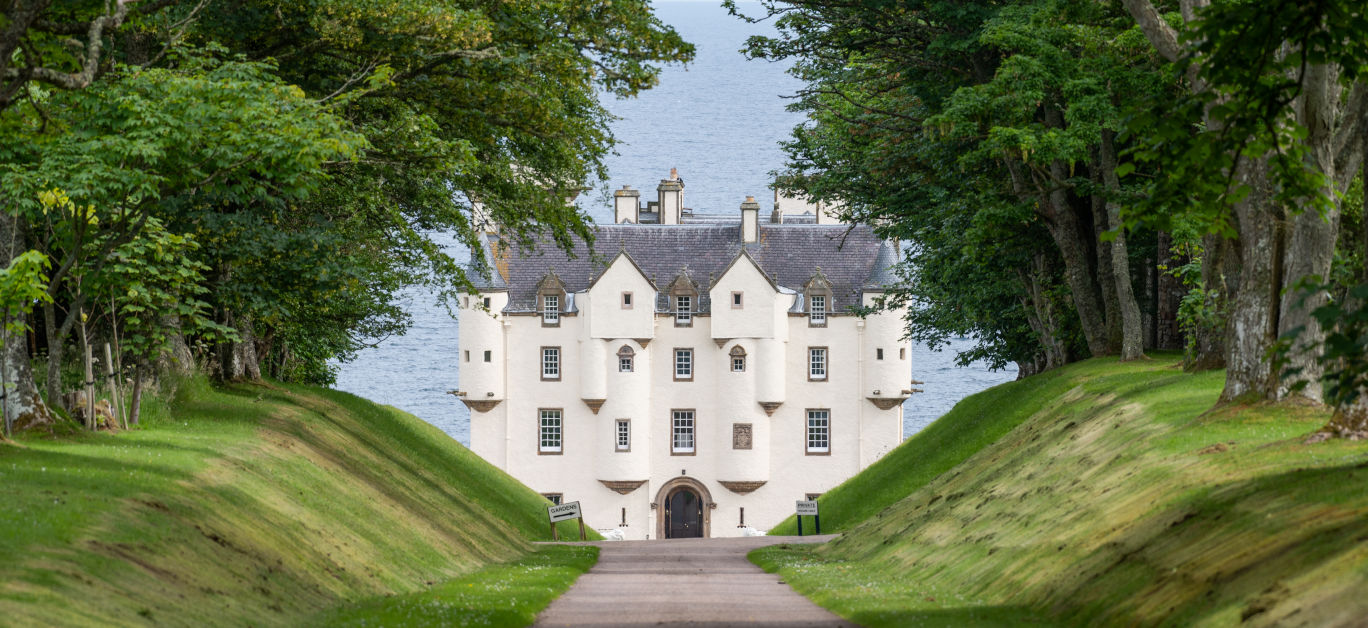With a dramatic clifftop setting overlooking the North Sea, Dunbeath Castle – in Caithness, Scotland – is one of the most spectacular properties currently available on the market.
The Category A listed castle has been extended from early parts which date back to the 15th century. In the 1860s, David Bryce, one of Scotland’s leading and celebrated architects of the 19th century, remodelled the early property and transformed it into the striking home that can be seen today. Bryce designed many churches and commercial properties, but much of his work can be seen in private mansion homes throughout Scotland.
He was initially a proponent of Palladian and Italian Renaissance architecture, but became renowned for his subsequent Scottish Baronial architectural style of the Gothic Revival. His work across different styles in Scotland has produced now iconic landmarks such as Fettes College and the original Royal Infirmary in Edinburgh.
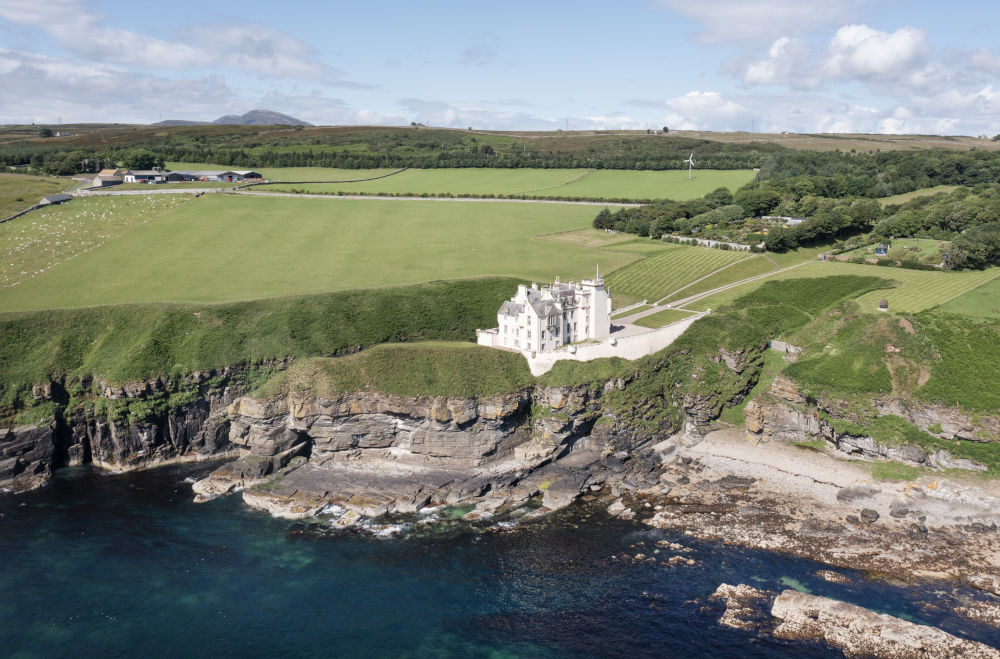
Dunbeath Castle is a fine example of his work, delivering the grand Baronial style castle that occupies the ancient defensive site on this rocky promontory in Caithness, a coastal county in the far north east of Scotland. The north and east boundaries of Caithness are famed for high sea cliffs, as well as long sandy beaches. Its south and west boundaries meet the rugged and mountainous Scottish county of Sutherland. The county is also home to another of Scotland’s most beautiful and famous castles, the Castle of Mey, formerly the Scottish holiday home of the late Queen Mother.
The castle is reached via a long, straight, tree lined driveway, the waters of the North Sea providing the bright blue backdrop to the grand and symmetrical white façade of the castle.
A castle is first recorded on the rocky peninsula at Dunbeath in 1428, when the lands belonged to the Earl of Caithness. The early structure was transformed into a four storey tower house in 1620 which remained occupied by the Sinclair family for 325 years. The tower was attacked and captured in 1650 during the ‘Wars of the Three Kingdoms’ (conflicts fought between 1639 and 1653 between the kingdoms of Scotland, Ireland and England, sometimes referred to as the British Civil Wars), before being reclaimed. Sir William Sinclair remodelled the property in the 17th Century, but today’s castle has been most influenced by David Bryce’s work.
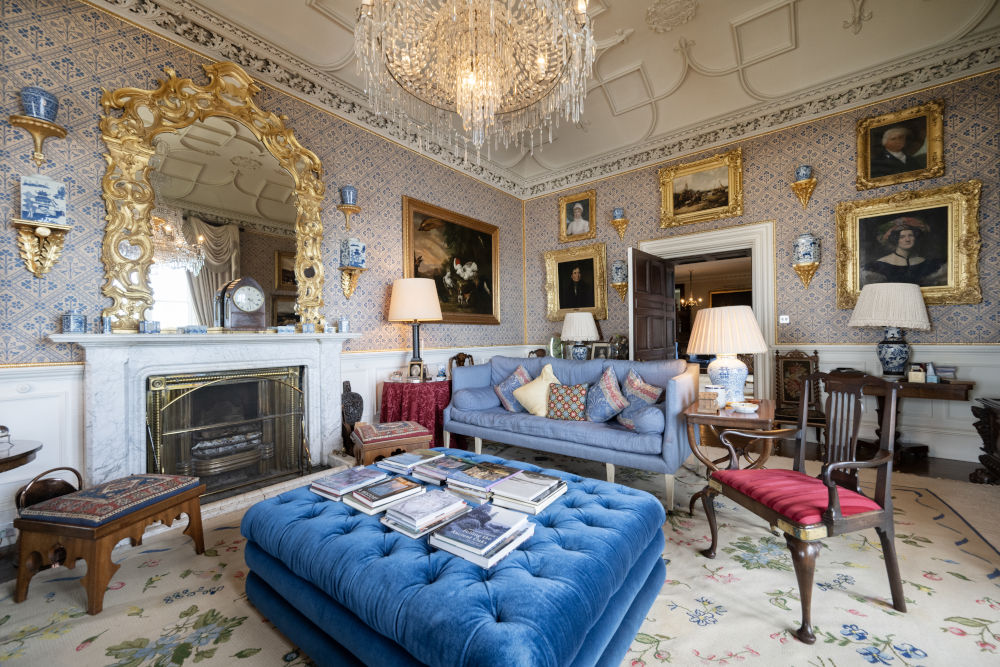
The magnificently imposing symmetrical northeast front is defined by two matching bow stair turrets with corbelled bases. At the corners, on the upper floor, two angle bartizans with conical roofs add further character to this beautiful and arresting ‘fairy-tale’ castle.
The walls reach five feet in thickness, sitting beneath a series of pitched slate roofs and crowstepped gables. There are numerous gunloops and a square tower with a crenellated parapet in keeping with the castle’s defensive origins. Bryce’s work also includes an extensive crenellated retaining terrace wall, with occasional bartizans and round terminal piers, forming a large gravelled forecourt and U-shaped enclosure to the castle.
The castle makes for a magnificent family and entertaining home with 13 bedrooms, three reception rooms and nine bathrooms.
The ground floor contains numerous storage rooms, as well as a flower room, boot room, laundry room, linen room and gun room. The first and second floors contain the principal apartments. The reception rooms sit on the eastern side of the castle and feature large windows which flood the room with light and enable extensive sea views.
There are two reception galleries, reached by an ornately carved turnpike staircase and multiple spiral staircases feature within the many turrets. The seven principal bedrooms, spread across the first and second floors, are named after great naval battles, while a further six bedrooms are found on the top floor. Many of the main rooms feature marble fireplaces, ornate cornicing, magnificent chandeliers and beautiful wood panelling.
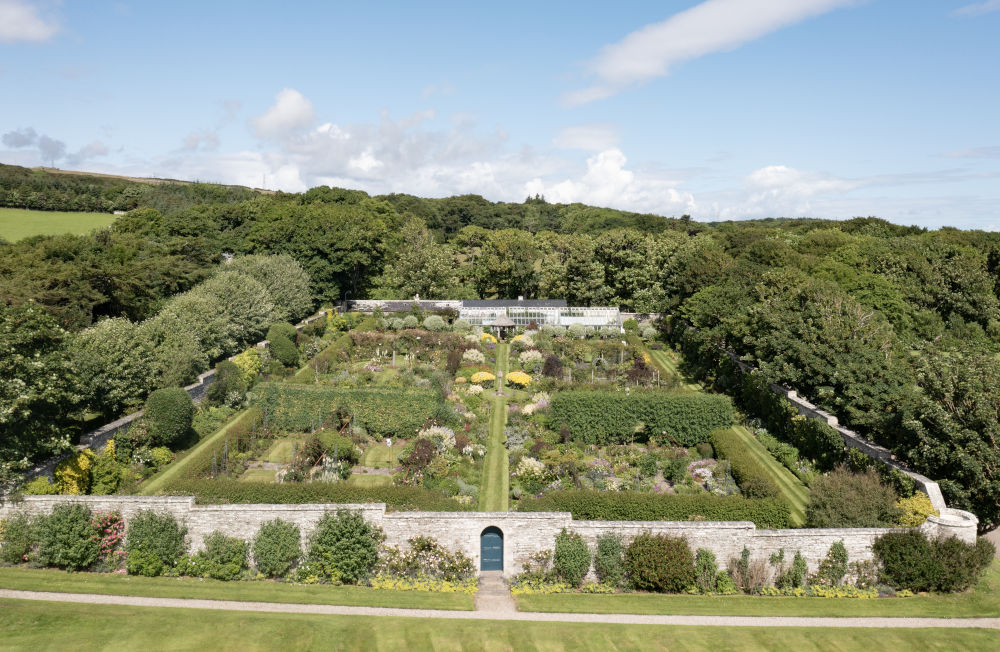
Outside, there is a matching pair of walled gardens, one of either side of the sunken drive, each around an acre in size. The ‘Southern Garden’ is an immaculate and spectacular ornamental and formal walled garden with two viewing turrets. There are glasshouses at the back, the main section laid out in a traditional shape of a cross and divided into eight sections intersected by grass paths edged with neat hedges. The ‘Northern Garden’ is more informal, the original kitchen and cutting garden, containing the old laundry house, which has been turned into a lunch room for relaxed family gatherings and entertainment.
Offers over £25 million will secure the keys to Dunbeath Castle, alongside the rest of the Dunbeath Estate. The castle is the principal residence on a working estate of some 28,500 acres of magnificent topography, incorporating 12.5 miles of river flowing from source to mouth (one of the few rivers in Scotland to be under single ownership from source to sea), four hill loch and lochans and four miles of rugged Scottish coastline.
There are 20 houses and cottages across the estate included in the sale, which provide accommodation for estate employees and income from short term holiday lets and longer term rental. Most of the properties are a traditional stone style.
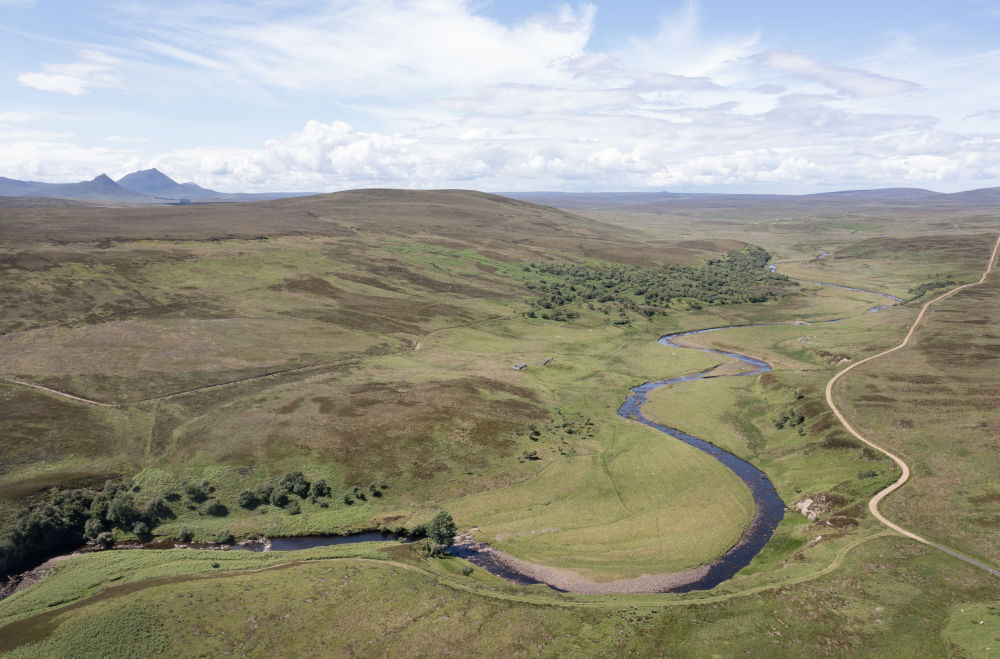
The estate provides for grouse shooting and stalking. The Dunbeath Water, controlled by the estate from catchment to ocean, provides the opportunity for salmon and sea trout fishing. The estate also has an in-hand farm, which includes over 78 acres of silage ground and permanent pasture and 119 acres of rough grazing. The farm supports a commercial herd of 70 suckler cattle and a flock of 800 breeding ewes, producing quality beef and lamb.
This is a property and a landscape steeped in history and heritage. The rich archaeological landscape of the Dunbeath area includes numerous Iron Age brochs (drystone hollow walled structures), an early medieval monastic site and was used by the Vikings as a harbour for their longboats and trading vessels.
The area is remote, but can be accessed by Wick (just over 20 miles to the north), which has an airport suitable for private jets, while major airports exist at Glasgow, Edinburgh and Aberdeen. Helicopters can land on the lawn at Dunbeath Castle.
This is a truly unique opportunity for a wealthy buyer to acquire a deeply historic Scottish estate, combining a celebrated Scottish architectural gem in Dunbeath Castle and thousands of acres of Scottish landscape recognised as one of the great coastal wildernesses. It’s one of the most magnificent properties currently available on the global market.
For more information on this stunning property, visit savills.com.












